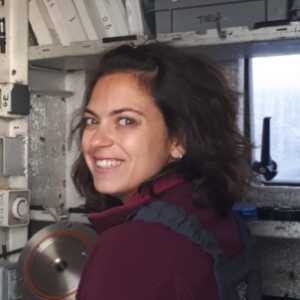Jul 27, 2024
DNA extraction from environmental size-fractionned plankton samples
- 1UMR7144-Roscoff Marine Station
- Ecology of Marine Plankton (ECOMAP) team - Roscoff
- Protist Research to Optimize Tools in Genetics (PROT-G)

Protocol Citation: Sarah Romac 2024. DNA extraction from environmental size-fractionned plankton samples. protocols.io https://dx.doi.org/10.17504/protocols.io.kxygxy5xdl8j/v1
Manuscript citation:
Lescot et al. in prep
License: This is an open access protocol distributed under the terms of the Creative Commons Attribution License, which permits unrestricted use, distribution, and reproduction in any medium, provided the original author and source are credited
Protocol status: Working
We use this protocol and it's working
Created: July 17, 2024
Last Modified: July 27, 2024
Protocol Integer ID: 103556
Abstract
This protocol has been designed for total DNA extraction from environmental marine water samples. Samples from different plankton size fractions are collected by Niskin bottles (Step Case 1) or by plankton net tows (Step Case 2) and are filtered on polycarbonate 47mm filters.
This procedure works for metabarcoding and metagenomics using short-read NGS (Illumina) but also works for long-read metabarcoding (Oxford Nanopore Technologies).
This protocol is applied in routine in our lab.
Guidelines
This protocol has been modified from the references provided by Macherey-Nagel :
- NucleoSpin DNA Plant II Mini kit (Macherey-Nagel, ref 740770.50) (50 preps) ;
- NucleoSpin DNA Plant II Midi kit (Macherey-Nagel, ref 740771.20 (20 preps).
Materials
Kits and reagents :
- NucleoSpin DNA Plant Mini kit (Macherey-Nagel, ref 740770.50 ) (50 preps) :
-Store all other kits components at room-temperature.
- NucleoSpin DNA Plant Midi kit (Macherey-Nagel, ref 740771.20) (20 preps) :
-Store all other kits components at room-temperature.
- Proteinase K 100 mg (Macherey-Nagel, ref 740506).
- Lyzozyme (Sigma-Aldrich, ref L6876-1G).
- Buffer PL1 125mL (Macherey-Nagel, ref 740918).
- Buffer PC 125 mL (Macherey-Nagel, ref 740937).
Specific equipments (same for both step cases) :
- Chemical hood Captair MID CAP 633 (Erlab) (facultative)
- Centrifuge 5417R equipped with rotor 30 wells 1.5-2mL microtubes (Eppendorf)
- Centrifuge 5804R equipped with Swing Rotor 16 wells Falcon 15mL tubes (Eppendorf)
- Thermomixer equipped with Thermoblock 24 tubes 1.5 and 2mL (Eppendorf)
Equipment required for step case : [>20] - 47mm - NucleoSpin DNA Plant II MIDI :
- Oven incubator with agitator rack for Falcon 15mL.
Safety warnings
Always wear a labcoat, and clean gloves for each step.
Decontaminate all the area (chemical hood, centrifuges, thermomixer, pipettes, and racks) with DNase away before to start.
Always use filter tips and sterile 1.5mL microtubes.
It is not necessary to work under a chemical hood.
At the end for the experiment, through liquid non-halogenic waste in an appropriate container.
Before start
- Heat the Incubators to 56°C for lysis.
- Heat buffer PL1 at least 30min at 56°C before to start the extraction to dissolve SDS precipitant.
- Clean all the area with DNA away.
- Equilibrate buffer PE to 65°C.
- Proteinase K : add 2500 µl Proteinase K buffer PB to adjust concentration to 20 mg/mL, incubate 1min at room temperature. Don't vortex!
Do aliquots of 250µL. Store at -20°C. Don’t freeze/defreeze more than 3 times.
- Thaw/prepare Lysozyme (20mg/ml) in TE-Buffer 1x.
- Wash Buffer PW2: add 100ml EtOH 96-100%
Depending of the plankton size fraction samples you have, select :
1 - DNA extraction using NucleoSpin Plant II MINI kits regarding [<20µ] size fractions (samples collected using Niskin bottles or pumping and filtered on polycarbonate filters, diameter 47mm) ;
2 - DNA extraction using NucleoSpin Plant II MIDI kit regarding [>20µ] size fractions (samples collected and prefiltered using a plankton net, and filtered on polycarbonate filters, diameter 47mm).
[<20] - 47mm - NucleoSpin DNA Plant II MINI15 steps
1 - DNA extraction using NucleoSpin Plant II MINI kits regarding [<20µ] size fractions (samples collected using Niskin bottles or pumping and filtered on polycarbonate filters, diameter 47mm).
Lysis
Lysis
Put 400µL of preheated buffer PL1 in a sterile microtube 2mL for each sample.
Cut the 47mm filter into small part and put it in a 2mL sterile microtube. Clean cisors and tweezers with DNA away between each sample.
Add 25µL of proteinase K (20mg/mL). Vortex.
Add 100µl of Lysozyme (20mg/ml) to the crushed filter, vortex and incubate for 5 min at room-temperature.
Incubate 2h @ 56°C, 900rpm in the Thermomixer.
Clarification of crude lysate
Clarification of crude lysate
Transfer the lysate with the filter on a NucleoSpin Filter column (purple column).
Centrifuge 5min @ 11 000g, at room temperature.
Transfer the eluate on a new sterile 2mL microtube using a P1000 without touching the pellet.
Precipitation/Purification
Precipitation/Purification
Add 550 µL of buffer PC to the lysate, mix by pipetting up and down 5 times.
Transfer 650µL of precipitate onto a green column (max 650µL).
Centrifuge 1min @ 11 000g. Discard the flow-through and replace the column on the collection tube.
Repeat Step 9 until all liquid has been loaded.
Add 400 µL of buffer PW1 to the membrane of the column.
Centrifuge 1min @ 11 000g. Discard the flow-through and replace the column on the collection tube.
Add 675 µL of buffer PW2 to the membrane of the column.
Centrifuge 1min @ 11 000g. Discard the flow-through and replace the column on the collection tube.
Add 200 µL of buffer PW2 to the membrane of the column.
Centrifuge 2min @ 11 000g. Discard the flow-through and the collection tube.
Put the column on a new sterile 1.5mL microtube correctly labeled (sample name, date, operator)
DNA Elution
DNA Elution
Add 50µL of buffer PE (preheated 65°C) onto the membrane of the column. Incubate 5 min @ 65°C in the thermomixer.
Centrifuge 1min @ 11 000g.
Repeat Step 13 by adding again 50µL PE or reelute the membrane with the same eluate to get more concentrated DNA.
Measure DNA concentration with Nanodrop or Qbit and store the DNA at -20°C (or-80°C for long-term storage).
Protocol references
